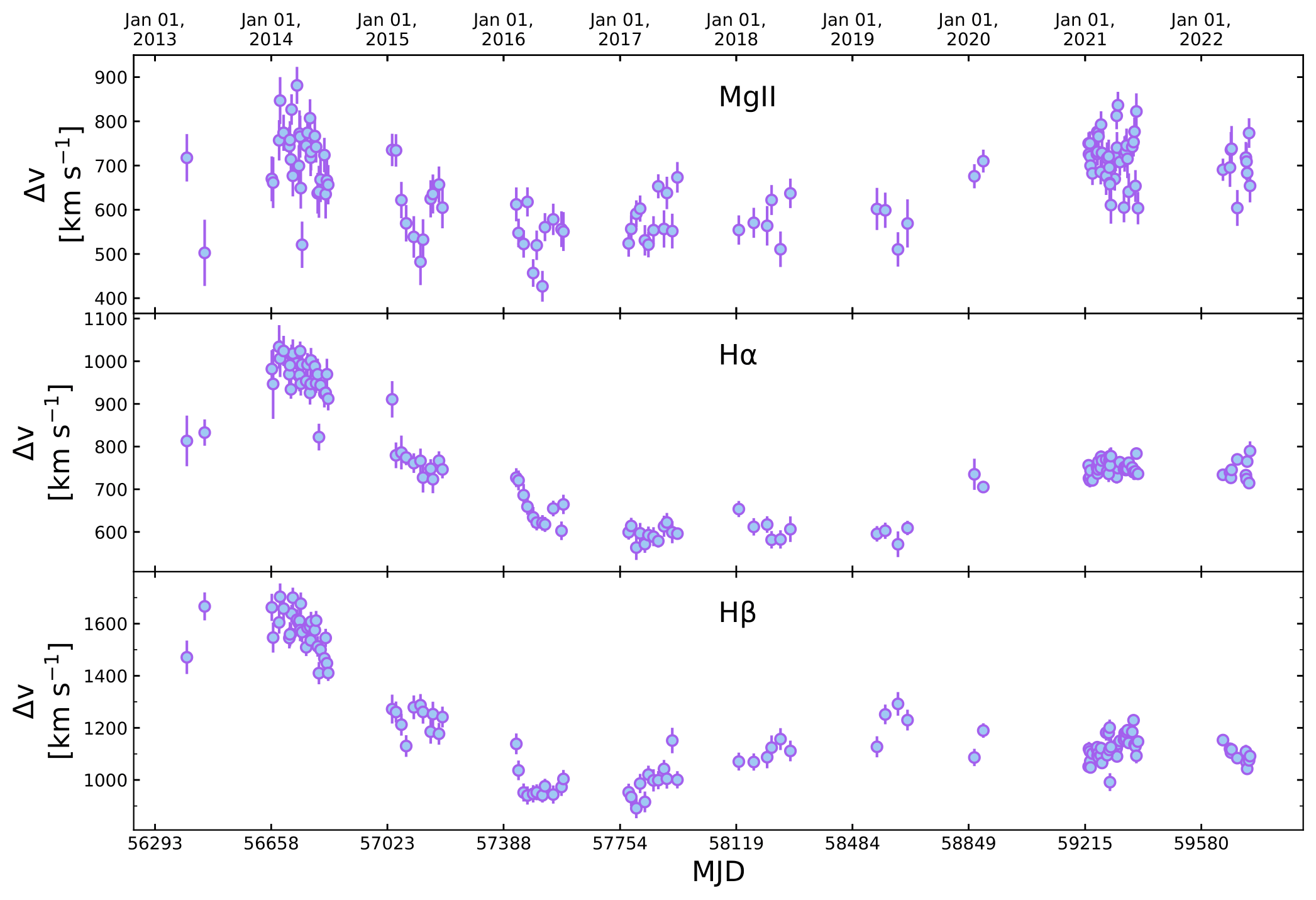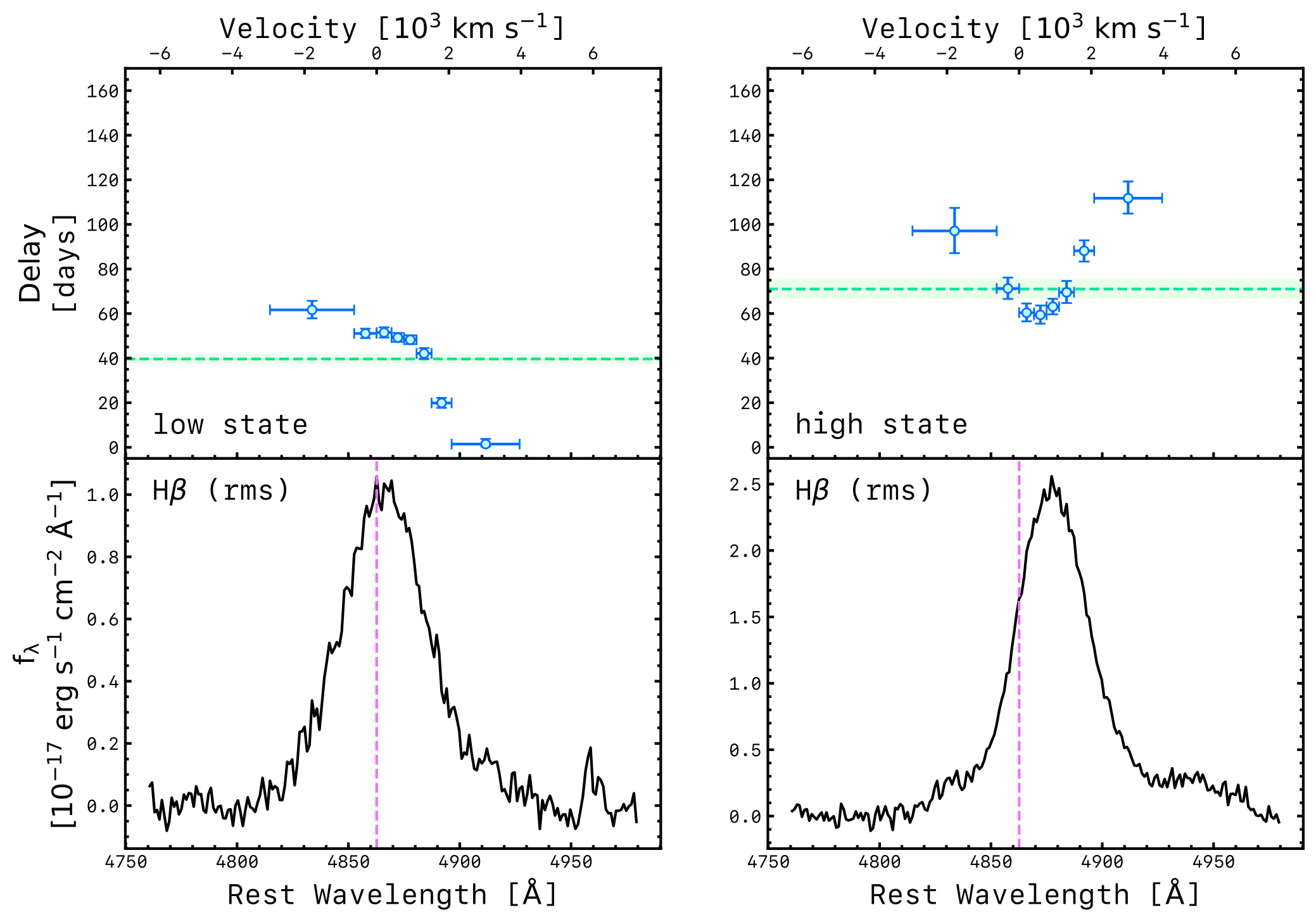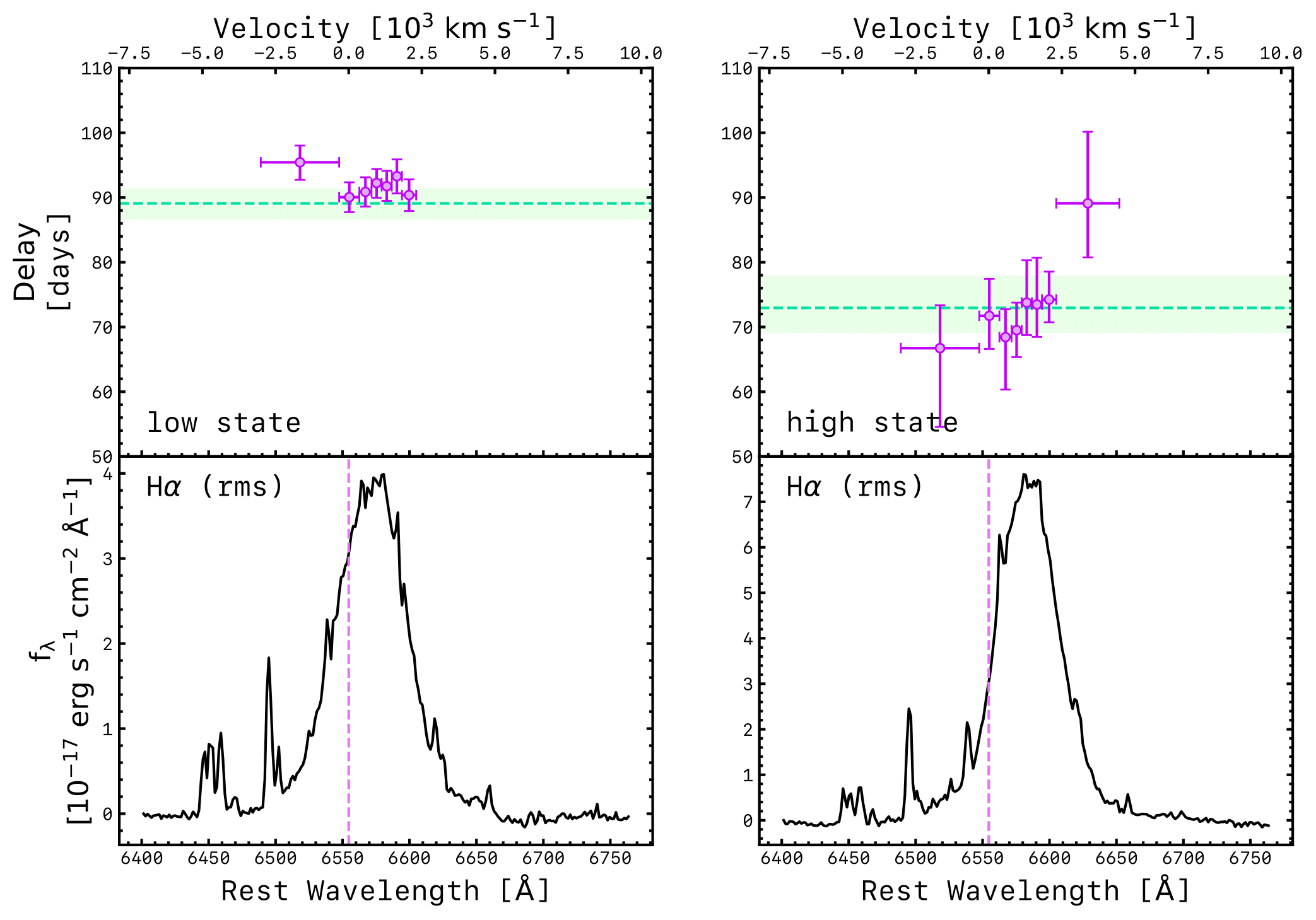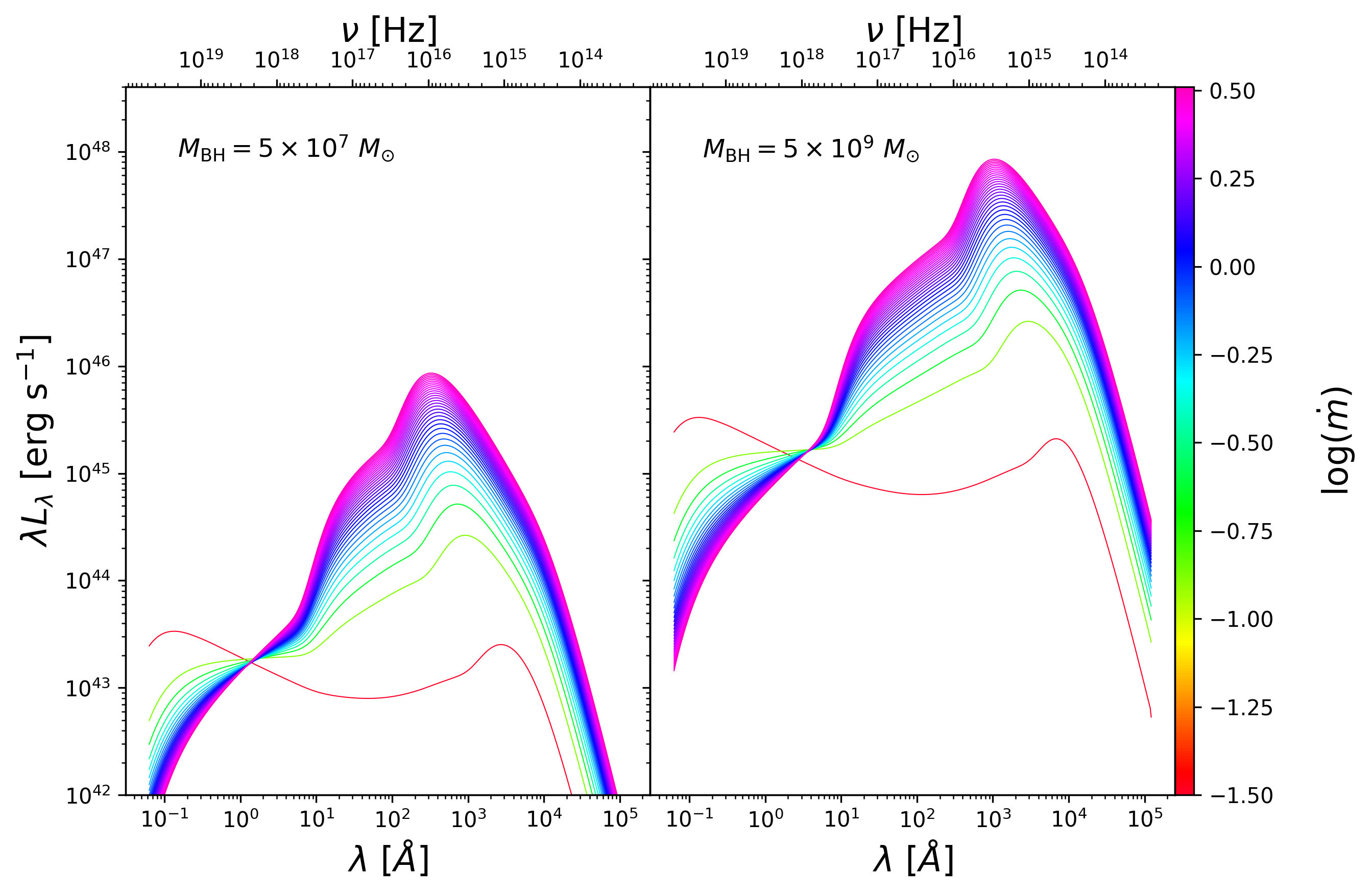Graduate Research
A Broad Search for Quasar Variability
I began my research in graduate school with a search for broad emission-line profile variability in a sample of 320 SDSS-RM/BHM-RM quasars. From this search, I found a quasar, RM160, whose broad emission lines underwent dramatic and recurring radial velocity shifts, which is pictured below. From this study, we interpreted the radial velocity shifts as inflow onto the BLR.

You can read more about this here.
Velocity-Resolved Reverberation Mapping
I am now focused on doing velocity resolved reverberation mapping of RM160 in order to understand the kinematics and structure of the BLR. We study the Hβ and Hα velocity-resolved response during two states: the state of low continuum flux and the state of high continuum flux.

We found that the inferred kinematics change from low state to high state in the Hβ response. In the low state, we see evidence for an inflowing BLR, while in the high state we see evidence for a virialized BLR.

We found similar evidence for changing kinematics from low state to high state in the Hα response. In the low state, we see evidence for a virialized BLR, while in the high state we find evidence for an outflowing BLR.
We also see that the kinematics between Hβ and Hα are different in both the low state and the high state. This is evidence that the BLR could be stratified kinematically.
Black Hole Spin
Other than my thesis work on BLR kinematics, I am very interested in black hole spin and how it relates to other black hole properties like mass, accretion rate, luminosity, etc. I have recently began a side project on determining black hole spin by fitting the UV/Optical SEDs of SDSS-RM quasars. For this, I am developing my own SED template fitting code specfically for black hole spin and applying it to ~200 quasars within SDSS-RM.

This is an example of how the SED template changes as a function of accretion rate.